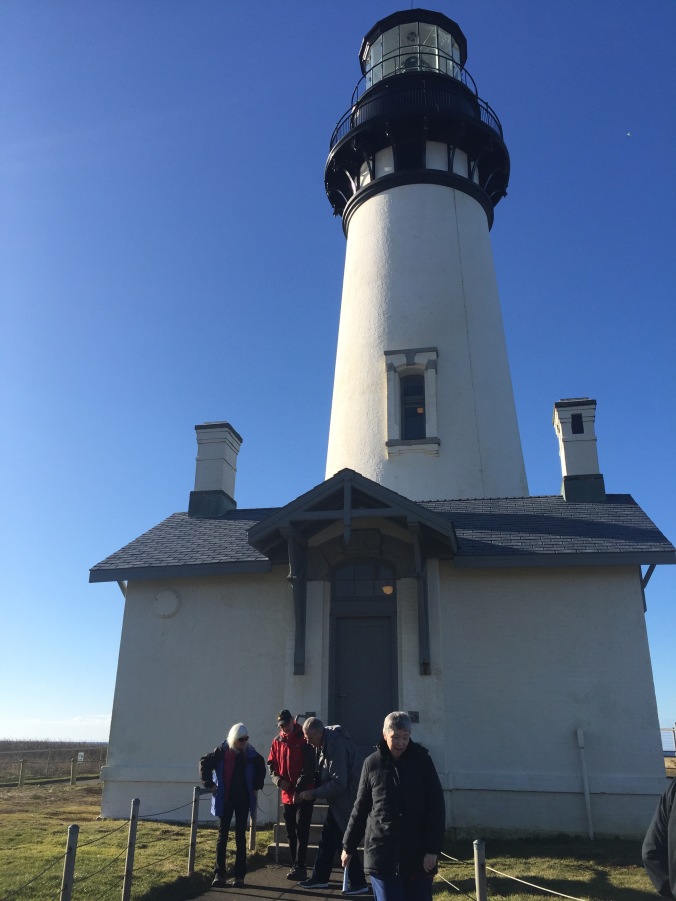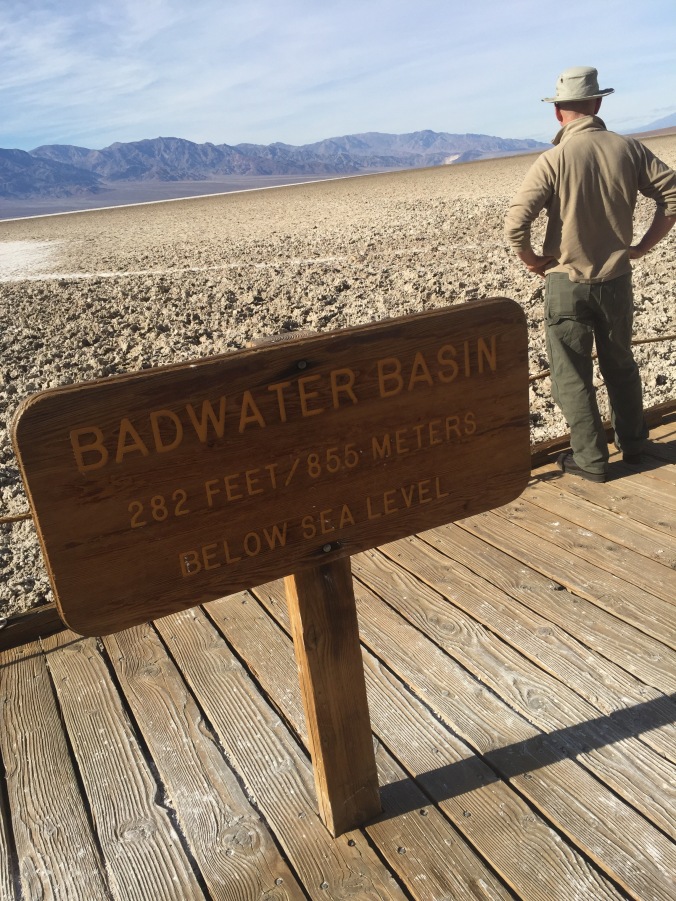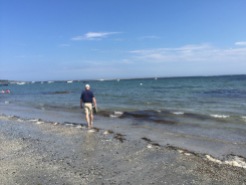We are spending a few months in Newport, Oregon, volunteering at the Yaquina Head Outstanding Natural Area, a BLM site that includes gorgeous coastal cliffs, beaches, birds, marine mammals, tidepools and yes a lighthouse. Whilst I was rangering last summer in the Vermont mountains, Ben was was combing through volunteer.gov to find us a gig on the water, so here we are! Our last hurrah before we are back to real life.
In exchange for volunteering four hours a day, five days a week, we have a free spot for the trailer, including water/electric/sewer. From our concrete pad (below left), we can see the ocean, if we lean a bit; a pair of bald eagles every time we walk out our door, if we are lucky; and this super cool stained glass peace sign our friend Laura made us (that somehow Ben has let me keep up-must be love of Laura who is also our #1 cat wrangler), if the incessant rain doesn’t wash it away.
In order to accommodate our new lifestyle, we had to invest in a dehumidifier, that requires emptying no less than 3X a day (in our less than 200 sq ft living space). We also got a white board calendar to mark our work start times-it changes every day depending on the tide. If it’s low tide, to Cobble Beach (below) we go to protect the sea stars, urchins, anemones & co. from the enemy: tourists. JK – tourists are rad, but this is a designated marine garden and we just need to keep an eye out and help everyone stay safe. BLM thoughtfully provides rain gear which we work, play and sleep in.

At the beginning and end of each tidepool shift, we put out these signs so folks will stay back from places the harbor seals like to hang out.
I almost stepped on the octopus below – see how well she blends in with the kelp! One can never get enough sea stars in the frame (below right). Their population was quite diminished by a mysterious wasting disease in the last couple of years, but shows signs of coming back. You’ll see some purple urchins and green anemones tucked in as well.
When we are not in the tidepools, we staff the Interpretive Center desk. A highlight is raising and lowering the flag (in rain gear naturally), and updating the white board with tide and weather information (you guessed it: rain). Have I mentioned the snow?
Or we might go a-roving – hiking the short trails, or bringing out telescopes so visitors can see the peregrine falcons, or until recently, the migrating whales.
We sign people up for lighthouse tours – and took one ourselves on one of the few sunny days. The lighthouse has been in operation since 1873. It’s a first order Fresnel lens. Automated in the 40s.


A few more tidepool sights below. We are there often enough that it’s pretty easy to notice something new or different. The rangers helps us out with id-ing stuff.
I’ll leave you with an octopus video of the same little lady pictured above. She scooted around for several minutes close to my boots – I was more afraid of her than she of me. She was likely trying to find her way back into the water. Rangers said it is pretty unusual to see one, and very unusual to see one out of the water. So here you go…up, doh, I have to upgrade to post video on WordPress. Go see it on Instagram where I can hopefully post it. 🙂 More from Oregon soon, specifically: on how one passes one’s free time in a 200 square foot trailer when it’s raining (constantly).









































































 The Sauters are from Germany – we met them at Wooden Boat School a few years back and have gotten together several times since – mostly here in the US (where they travel a lot!) and once in Barcelona, which was super sweet too. Here in Maine, where they come so often, the shopkeepers and lobster men know their names. And they’ve made some other friends too, who joined us for an epic “bbq” featuring every fish in the sea. A blueberry snack cup, Owl’s Head Lighthouse, and Pale Ale named for a Civil War general (from Maine) were just some of the other highlights.We might have talked about US elections a bit too.
The Sauters are from Germany – we met them at Wooden Boat School a few years back and have gotten together several times since – mostly here in the US (where they travel a lot!) and once in Barcelona, which was super sweet too. Here in Maine, where they come so often, the shopkeepers and lobster men know their names. And they’ve made some other friends too, who joined us for an epic “bbq” featuring every fish in the sea. A blueberry snack cup, Owl’s Head Lighthouse, and Pale Ale named for a Civil War general (from Maine) were just some of the other highlights.We might have talked about US elections a bit too.









































































































